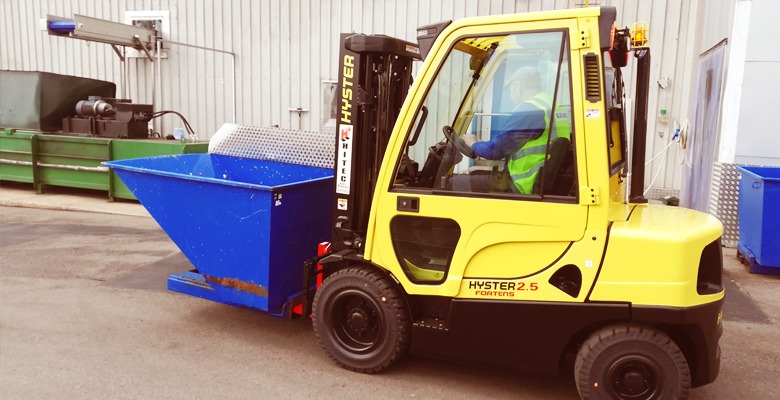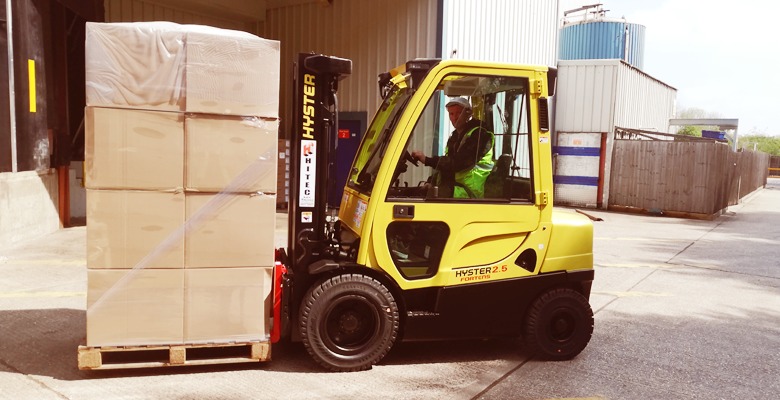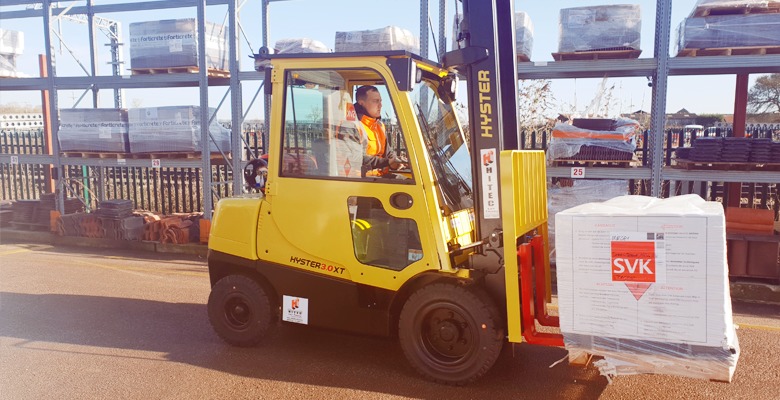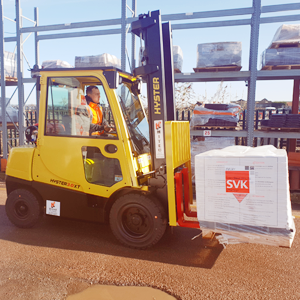Sooner or later, the working life of a forklift comes to an end. Before you commit to choosing a replacement, there are a few key questions that could save you hundreds, thousands or even tens of thousands of pounds in the long term.
By pinpointing your precise requirements, it’ll become easier to find the ideal machine that ticks all the right boxes.
Here are some of the top questions to consider before buying your next forklift, so that when you talk to your dealer, you feel like you are fully prepared.

1. Are you working predominantly indoor or outdoor?
Whilst this may seem self-explanatory, it plays a vital role in guiding the decisions you make when considering a forklift.
If operations are predominantly outdoor, then in most cases the operator will be more comfortable with an enclosed cabin due to heating and protecting from the elements. Conversely, an open cab will be more appropriate for indoor environments, where an operator requires greater visibility.
This also dictates which fuel type will work best for your needs.
- Diesel forklifts are large, powerful pieces of equipment which makes them well suited to outdoor work.
- LPG forklifts use propane: a versatile fuel that works well for both indoor and outdoor applications. However, the fuel tanks are small and generally require more frequent refueling than diesel.
- Electric forklift options are most common for purely indoor use, though there are now models that can also operator outdoors on different types of surface.
2. Will there be any uneven ground?
The question of indoor or outdoor also requires you to consider the types of surface your forklift will operate on. From thick mud that gets into your boots to polished concrete floors, there is extensive variation in the types of ground your equipment could work on. This in turn will impact on the type of forklift and chassis you need.
Different classes of forklift are uniquely suited to different operating conditions. Some are only suitable for smooth, hard surfaces while others have features that wouldn’t be necessary in the same application.
3. How heavy will the load be typically?
Load dimensions truly come in the full range of shapes and sizes.
In the world of forklifts, the weight of the object being lifted is important, but there are other qualities which need to be considered when determining the required capacity of the machine. The length, height and width of the objects will determine the centre of mass, and this will impact on the capacity of your forklift.
Take detailed measurements of the loads you need to lift, including a good approximation of their weights. This information will be important for your forklift sales rep to calculate the required lift capacity to ensure you get the best machine for the job at hand.
4. What height will you need to lift to?
This question isn’t asking you to look at the maximum fork height of your current forklift. It’s asking you to take a measurement of the highest racking or package in your facility in order to determine the maximum fork height you will require.
It’s also important to factor in any obstacles that you may need to avoid when placing a product onto a higher racking or position.

5. How big is the space you are operating in?
If your facility or yard has any height restrictions, you’ll need to consider these when choosing a forklift.
Things to consider include:
- Doorways
- Beams
- Overhead ducting
- Trailer/van heights
It’s also important to consider if the forklift is to be operated inside a trailer or a van and if so, will you be required to stack products whilst inside? Understanding the space and height restrictions alongside lift heights will determine the type of mast you need. A standard mast will have the best visibility and capacity retention, but it will increase the overall height of the forklift. A triple mast will offer greater lift heights with a lower machine height than the standard mast, but you will have to make sacrifices in terms of visibility and capacity retention.
6. How wide are your aisles?
This may seem like an obvious one, but it’s important to be precise.
You need to ensure your staff can operate the forklift safely in the space that’s available in the environment. The width of your aisles will determine the size of the machine they can accommodate, and you need to factor in the machine’s ability to manoeuvre comfortably. This includes turning and operating the forks without bumping into racking units or knocking anything over.
7. Will you need to run your fleet 24/7?
Think about the operating times – does your facility run a single, double, or even triple shift operation? Are you running a continuous operation in which the forklift is an integral part of operations? Perhaps the machine is merely a supporting factor that is used for periods of time throughout the working day.
Higher usage operations will result in more wear and tear on a machine, which will decrease its overall longevity. In this case, you would be best advised to opt for a new machine over a used one, as this will ensure you get the most out of your investment. On the other hand, if your machine is likely to have less than 4 hours operating time each day, a used machine will probably be sufficient.
8. Do you need the forklift long term?
There is more than one way to acquire a forklift for your facility. The first option is to purchase one outright, whether you choose to go with brand new or used equipment. This is arguably the best option for long term, because it means you will own the forklift permanently whilst keeping ongoing costs to a minimum.
If you only require the forklift for a short period of time, you may be better off renting one. This will afford you open-ended usage of a machine for a specified time period, which can be as little as one day or many months at a time. This means you will only have the forklift for the amount of time you require it, and will require less expenditure than purchasing outright (unless the rental extends into years).
Of course, you could purchase a machine and then sell it on when you are finished with it, but there is no telling how much money you would recoup this way, and there are no guarantees that you would even be successful in selling it – particularly if the machine is damaged in any way.
The third option is to lease a forklift, which involves acquiring a new machine for which you make regular payments for an agreed number of months (usually 36-60 months). At the end of the lease, you return the equipment to the lender. This is a good option when usage is likely to be 3 hours per day, and you know the application of the forklift will change in the coming years.

9. What kind of budget are you willing to spend?
The choice of whether to buy, rent or lease should be guided by the usage requirements you have and the budget at your disposal. Renting and leasing are better for the short or medium-term. Renting or leasing may also bring the added benefit of not having to pay extra for maintenance.
If you do require a forklift for the long-term, and you have the capital to invest, then purchasing is usually the best option. However, usage requirements still need to be factored in to help decide whether a new or used machine would be best for you.
If forklift usage will be less than 3 hours per day, a quality used forklift is worth considering. Any longer than this and a new machine would be best. Of course, if you don’t have the budget for a new machine, and even the finance options aren’t enough for you, then you may be forced to go with a used forklift.
10. Will a forklift fulfil all of your material handling requirements?
You know your facilities and operations better than anyone. Will a forklift will be the answer to everything you need to do on site? There are all manner of accessories available for different types of forklift. This includes various tyre options as well as lights, backup alarms, ergonomic support, mirrors and fork/lift attachments.
—
If you have a good understanding of your material handling needs, a forklift dealer can guide you on the most appropriate tyre options and choices of optional accessories. If you find that there is no forklift that can handle all of your needs, you may need to consider investing in more than one type of forklift, or examine your options for what else might be available to meet your criteria.
If you’re ready to start looking for some new equipment, or you need a little help finding the answers to these questions contact Hitec and one of our friendly team will be happy to help you out with an on-site evaluation.

